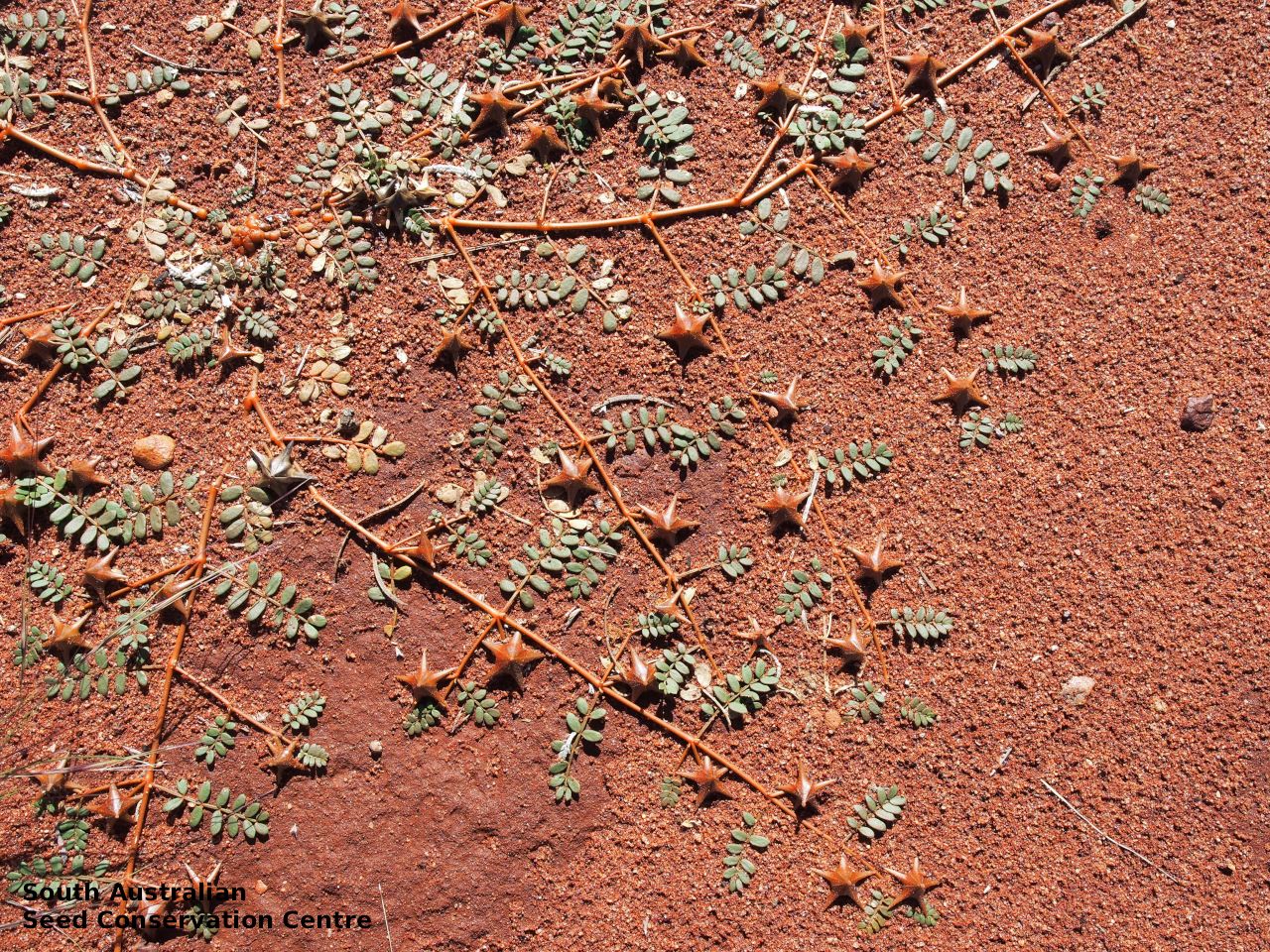
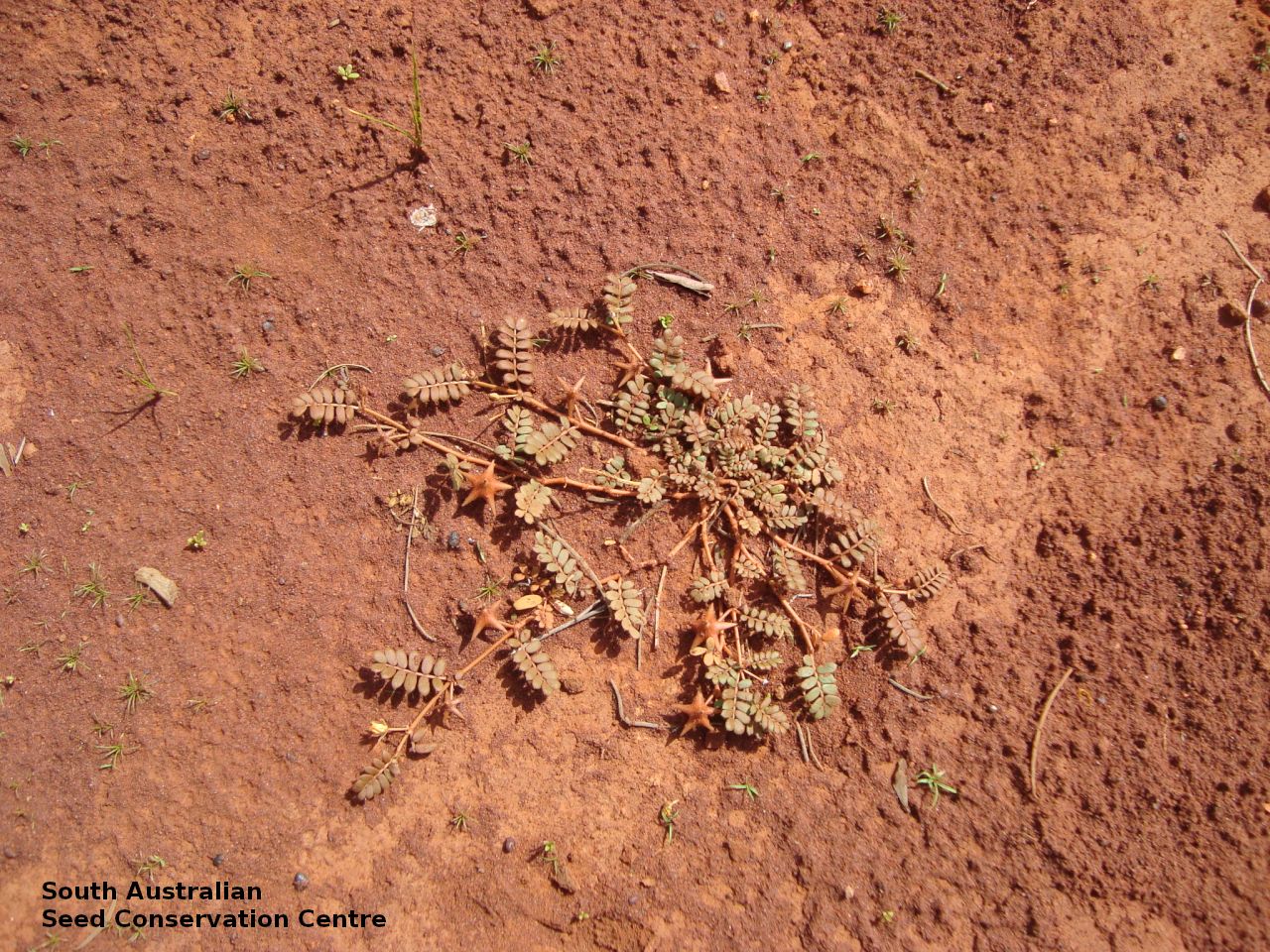
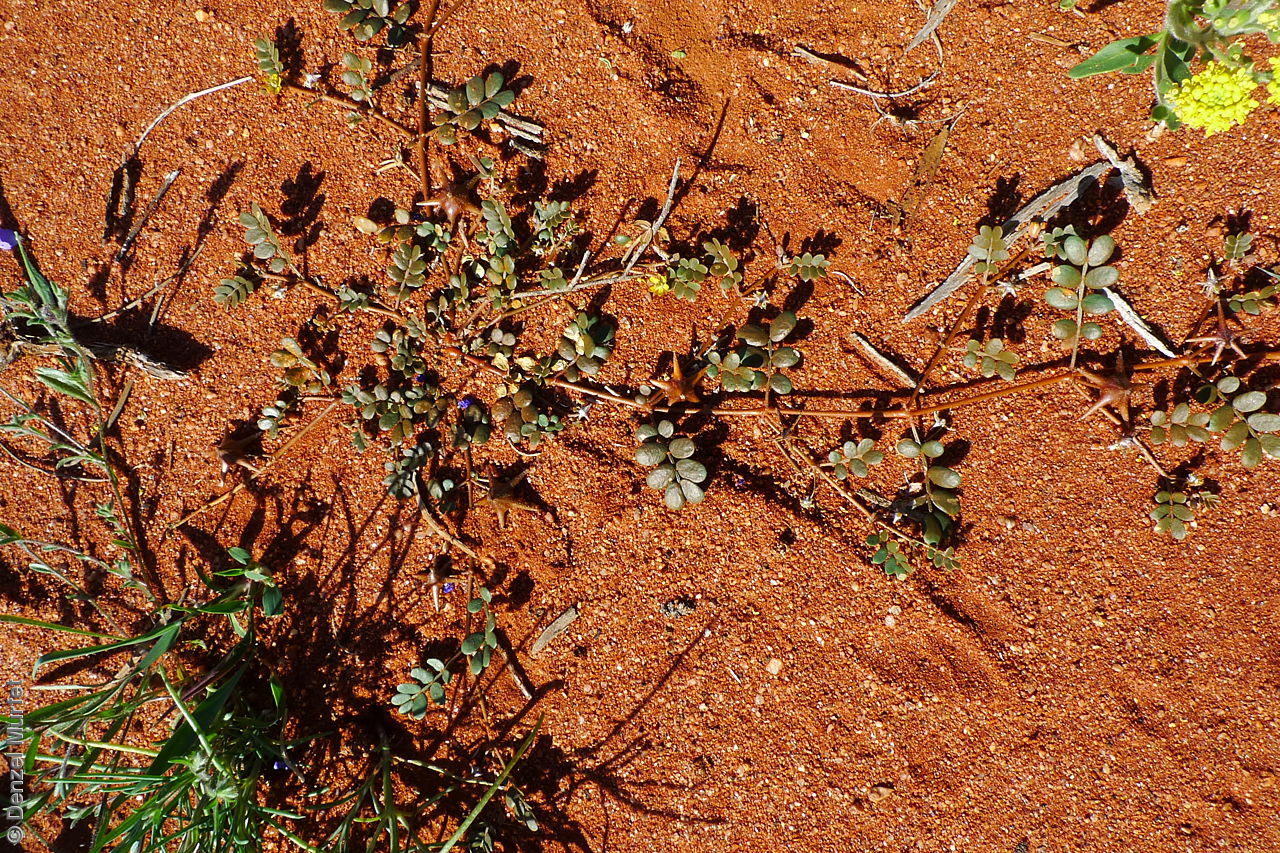
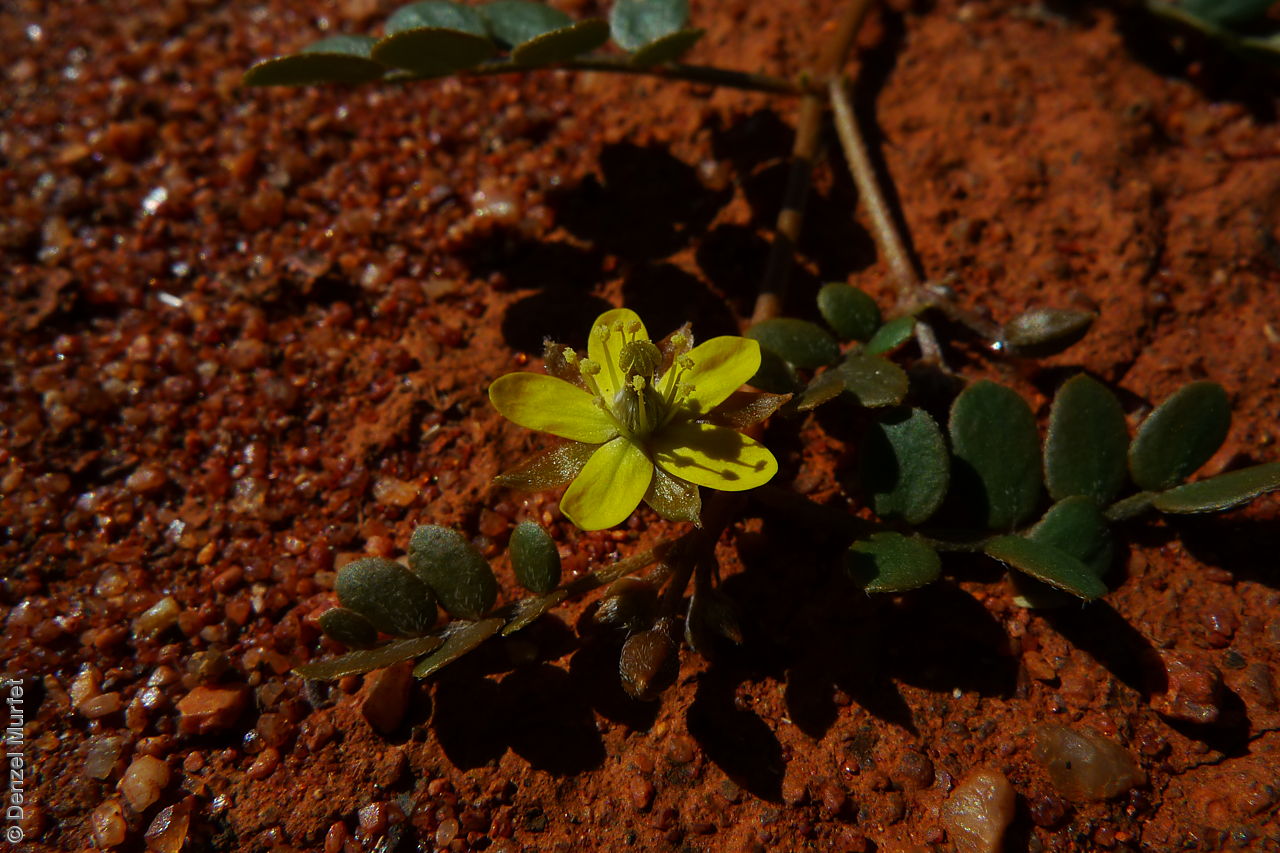
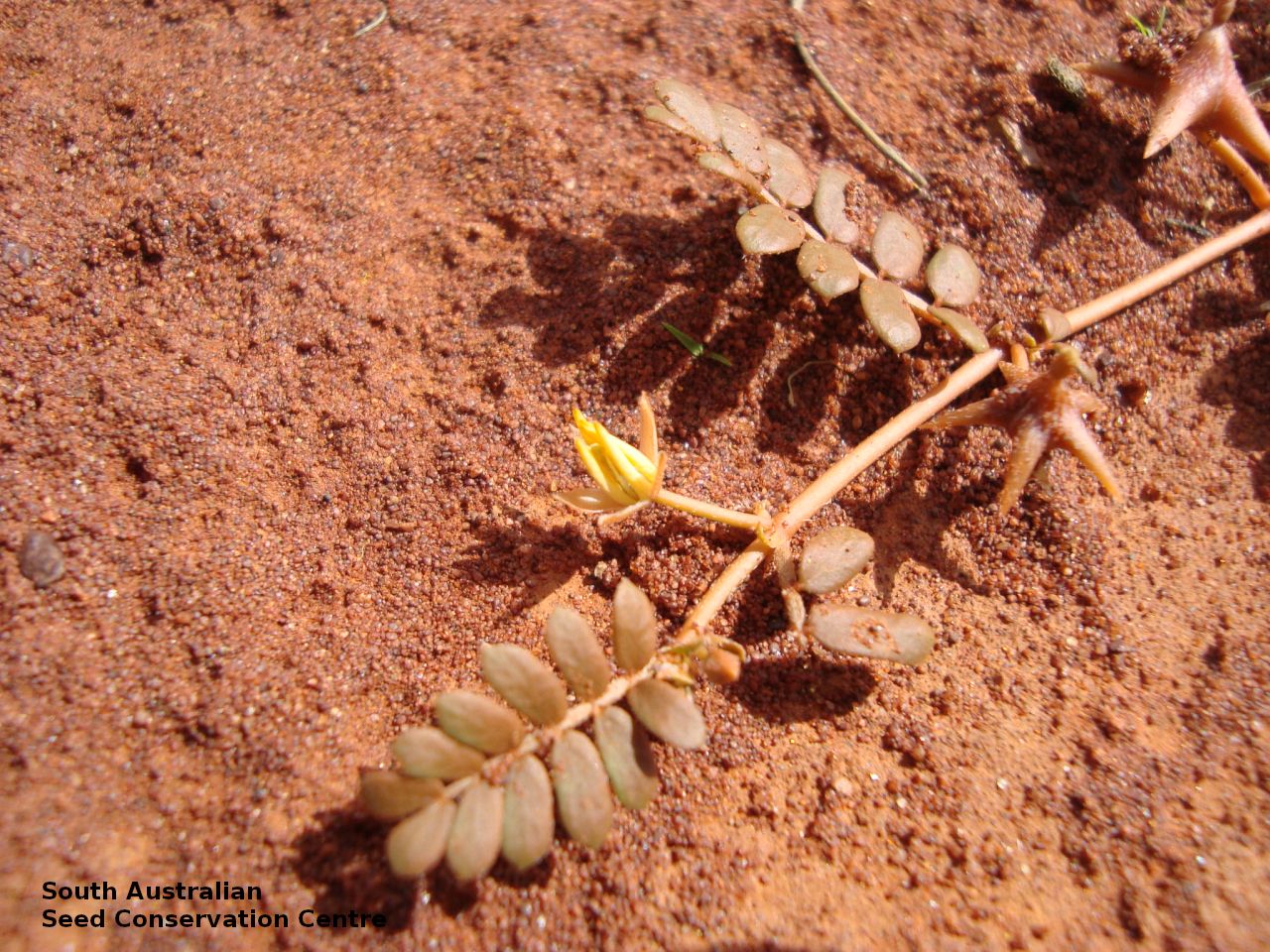
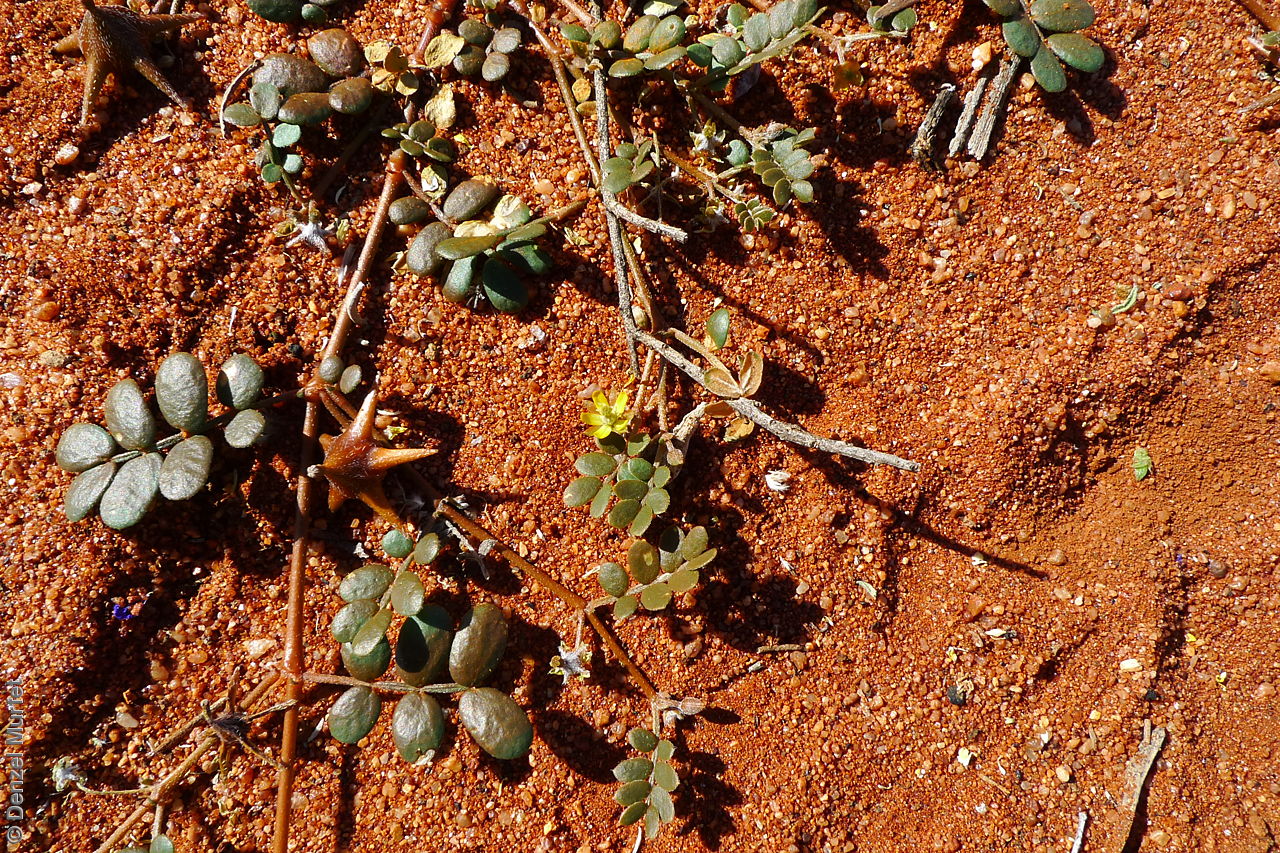
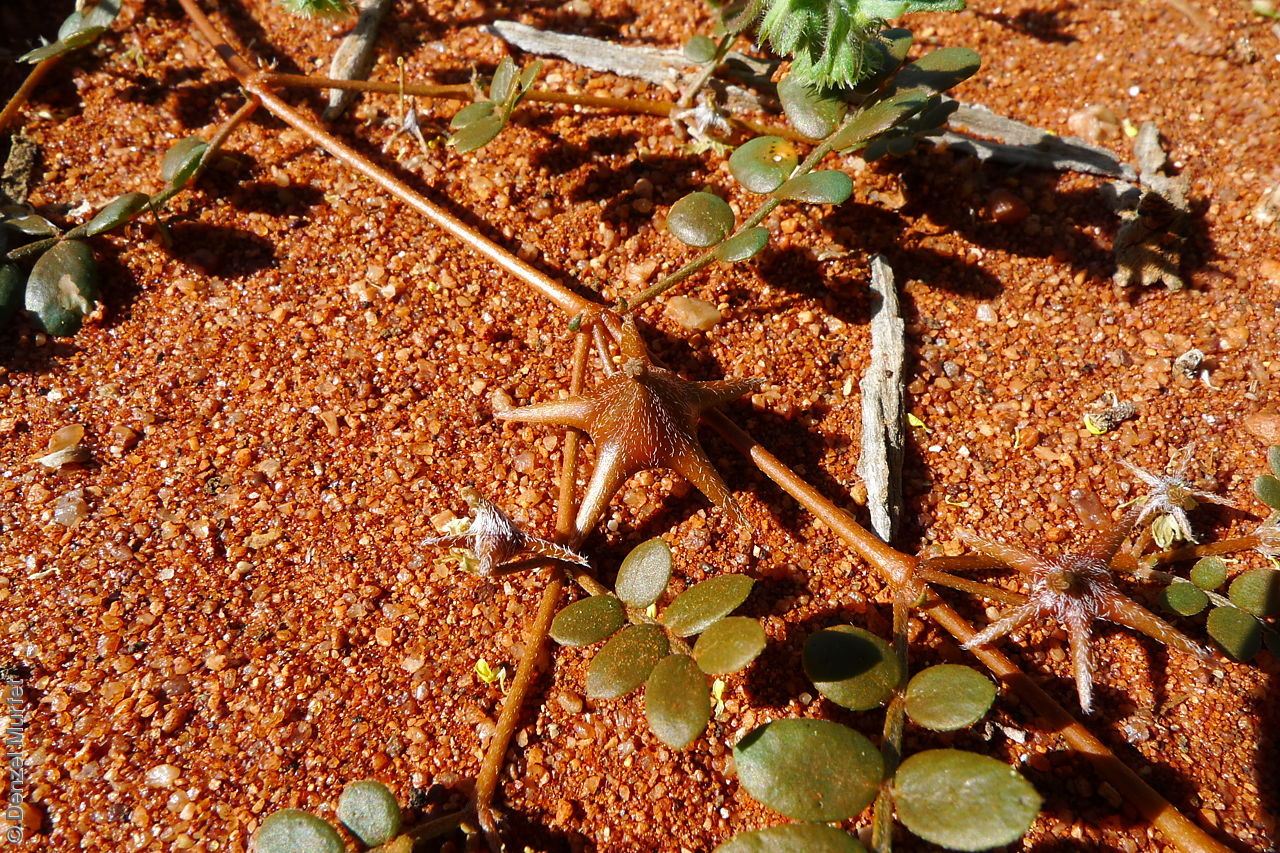
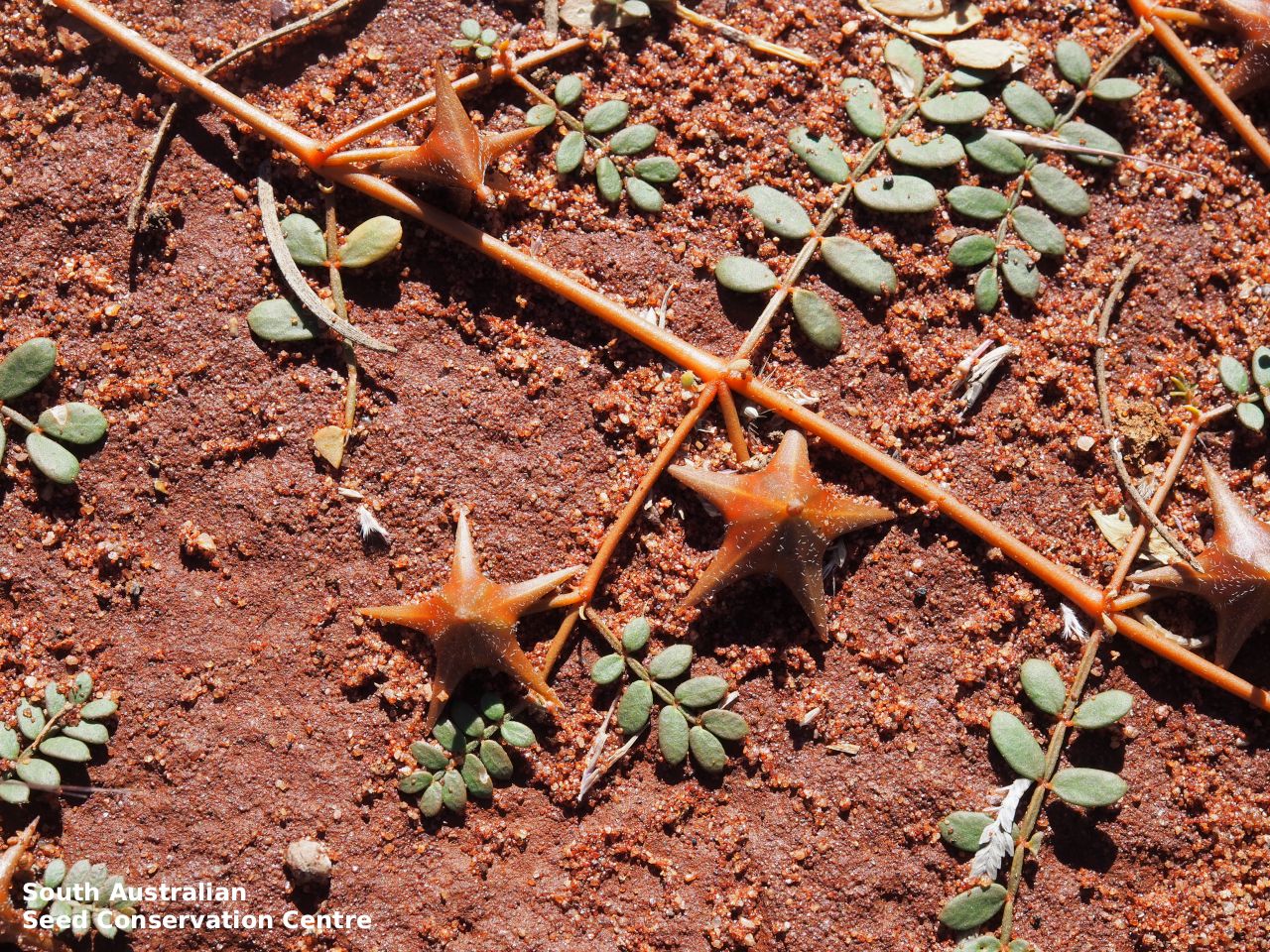
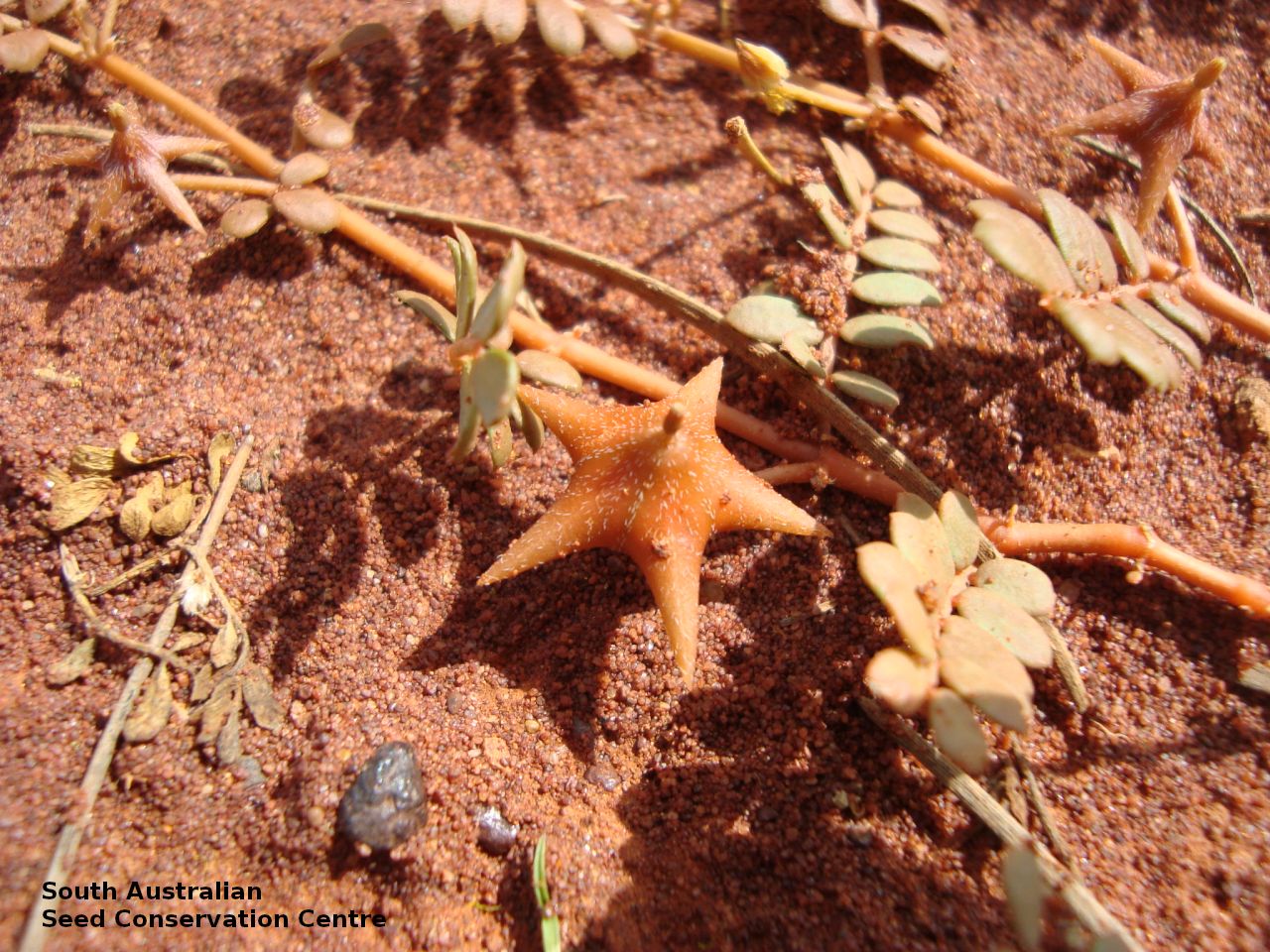
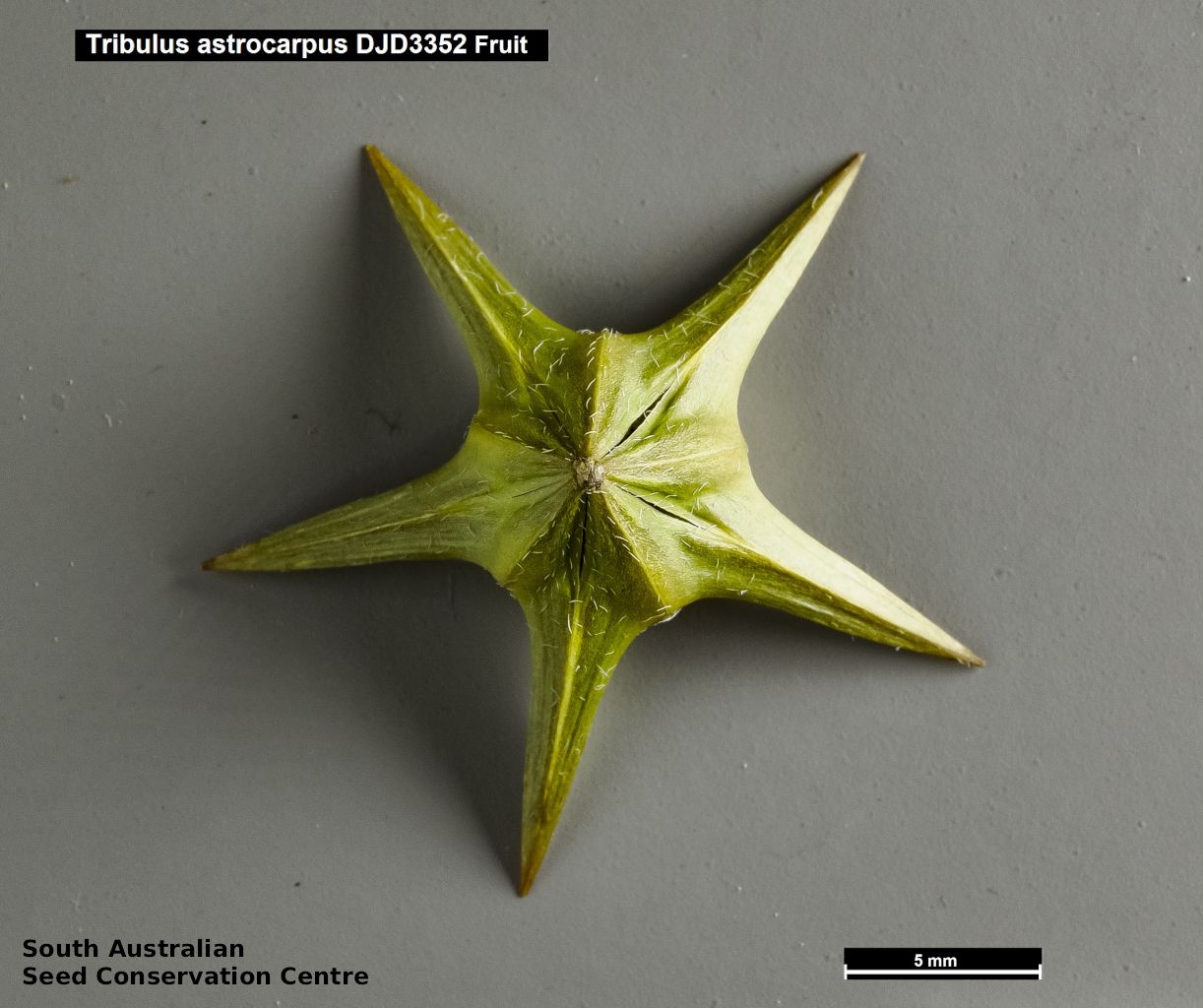
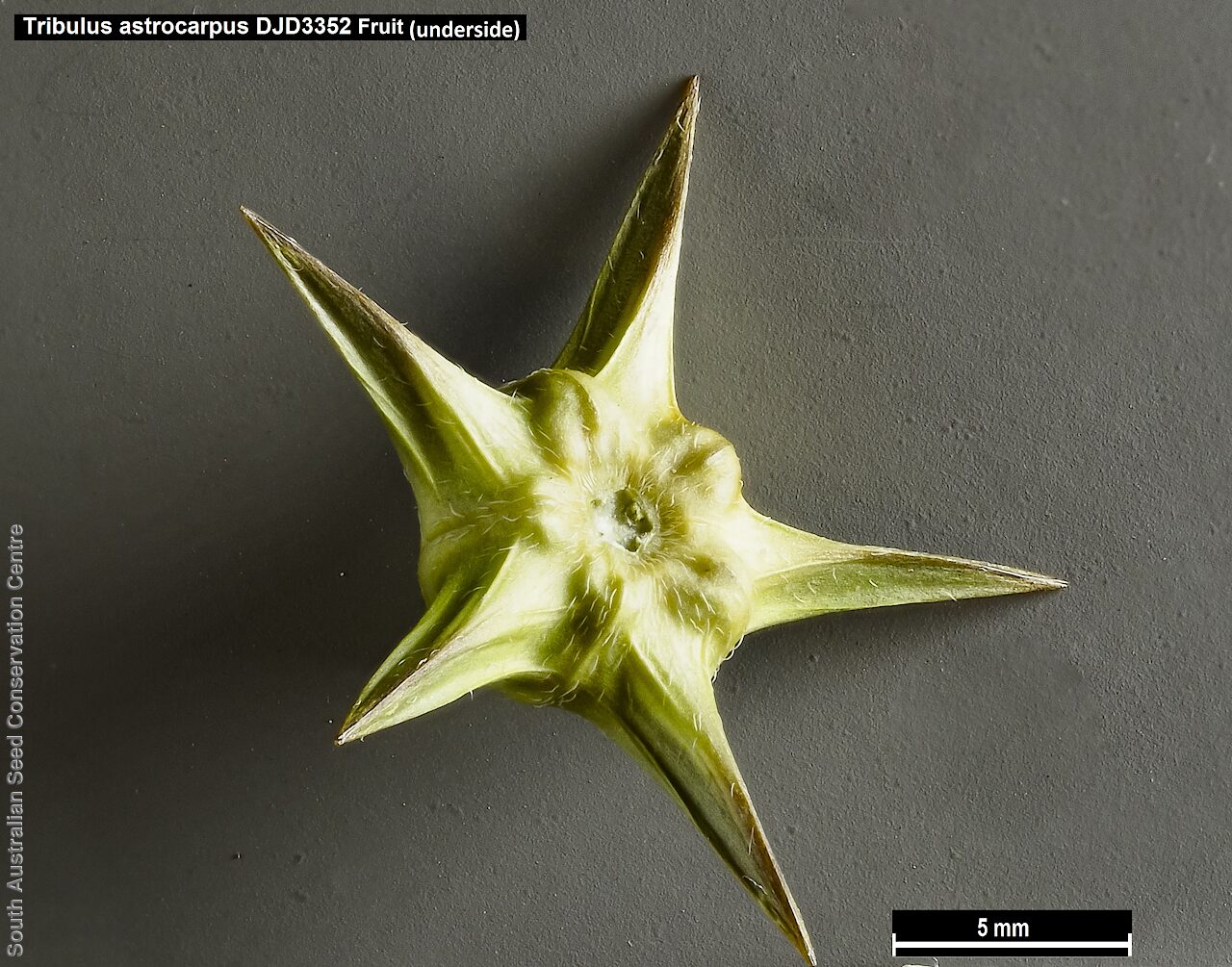
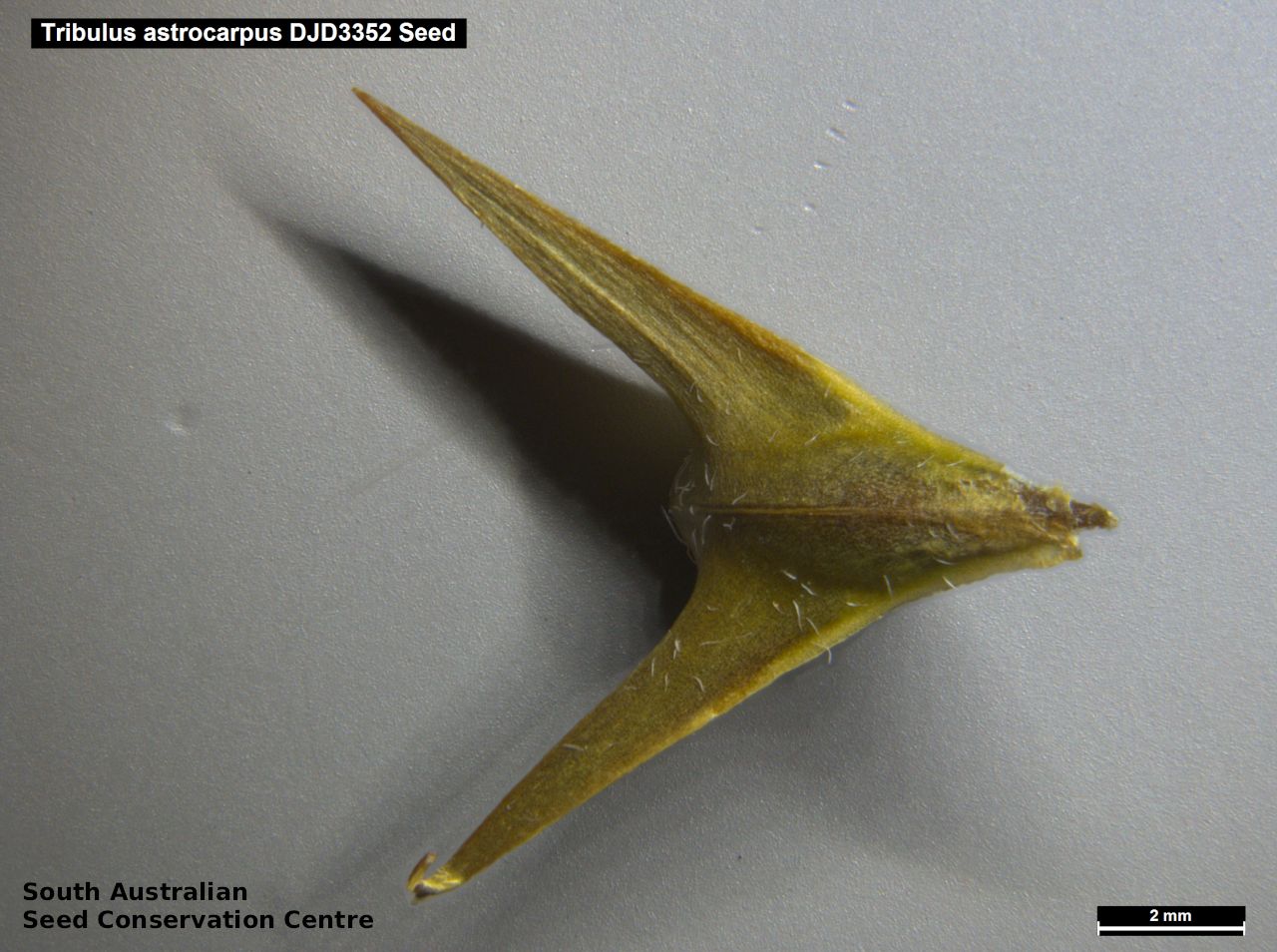

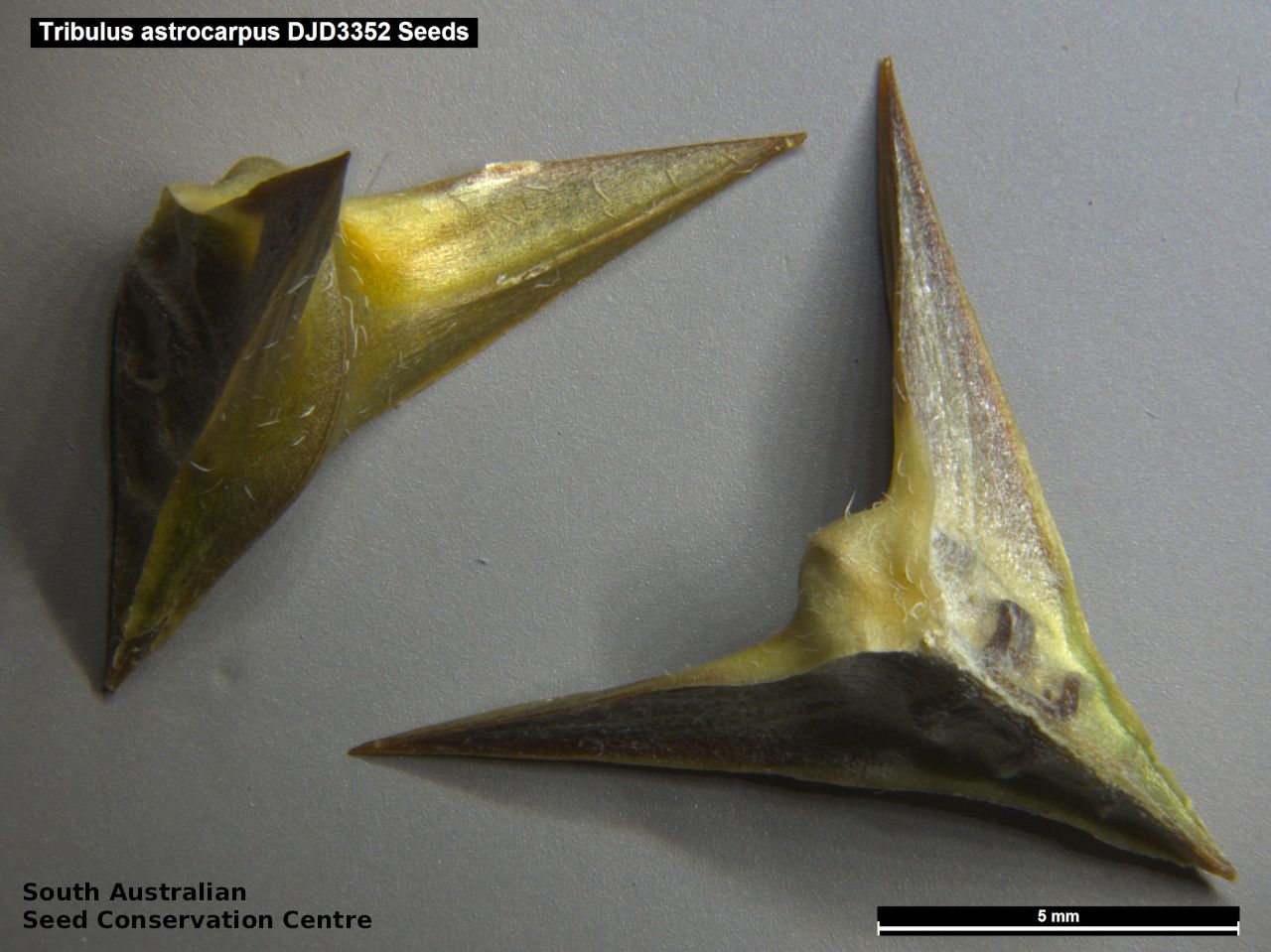


Common names
Star-head
Walytjapiri
Star-fruit Caltrop
Etymology
Tribulus from the Greek 'tribolos' meaning water-chestnut and translated into Latin as 'tribulos' which originally meant the caltrop, a 4-pointed military instrument, employed to lame advancing cavalry, and the name also applied to Tribulus terrestris. Astrocarpus from the Greek 'astron' meaning a star and 'karpos' meaning a fruit; alluding to the star-shaped fruit.
Distribution and status
Found in the north and north-western parts of South Australia, growing on red sandy soil in river flats, drainage lines and flats. Also found Western Australia, Northern Territory and Queensland. Native. Uncommon in South Australia. Common in the other states.
Herbarium regions: North Western, Lake Eyre
AVH map: SA distribution map (external link)
Plant description
Prostrate hairy annual herb. Leaves alternate, with 3-6 pairs of leaflets, leaflets ovate-cuneate or oblong to 10 mm long. Flowers yellow to 8 mm diameter with 5 petals that slightly exceeding the calyx. Flowering between March and October. Fruits are woody star-shaped fruit to 25 mm across with 5 rigid horizontally spreading spines, splitting into 5 segments, each bearing 2 halves of the spines of 2 adjacent carpels. Seeds are contain in the basal part of each woody fruit segment. Seed embryo type is spatulate fully developed.
Seed collection and propagation
Collect seeds between May and December. Collect fruits that are hard and brown. Some fruits maybe split and laying on the ground. No further cleaning is required if only fruits are collected. Store the seeds with a desiccant such as dried silica beads or dry rice, in an air tight container in a cool and dry place. Seed viability is usually high. This species have physical and physiological dormancies that needs to be overcome for the seed to germinate.
| Location | No. of seeds (weight grams) | Number of plants | Date collected | Collection number Collection location | Date stored | % Viability | Storage temperature |
|---|---|---|---|---|---|---|---|
| BGA MSB | 1,900 (65 g) 1,900 (65 g) | 3 | 19-May-2007 | RJB71961 Lake Eyre | 1-Aug-2007 | 90% | -18°C |
| BGA MSB | 1,900 (65 g) 1,900 (65 g) | 3 | 19-May-2007 | RJB71961 Lake Eyre | 1-Aug-2007 | 90% | -18°C |
Number of plants: This is the number of plants from which the seeds were collected.
Collection location: The Herbarium of South Australia's region name.
% Viability: Percentage of filled healthy seeds determined by a cut test or x-ray.